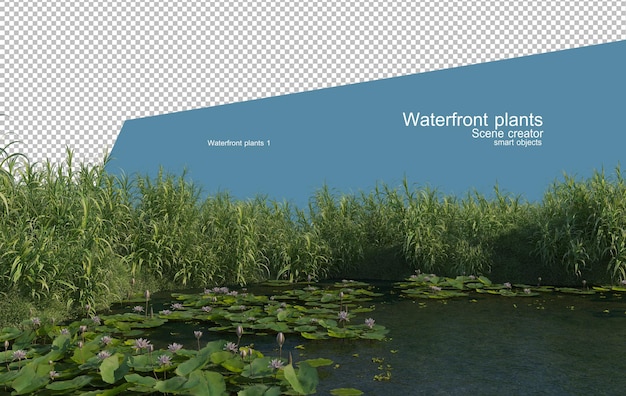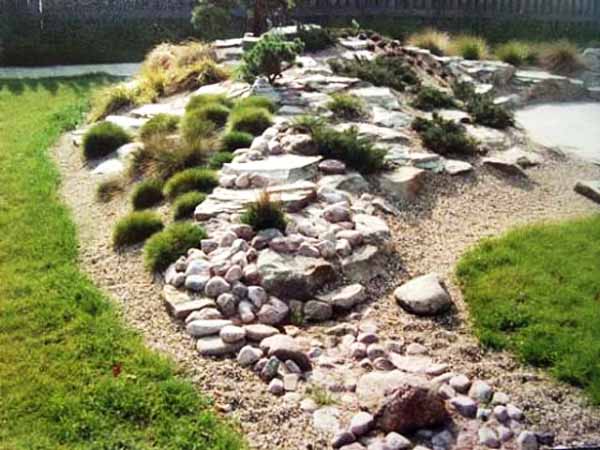
Nurturing Nature: A Comprehensive Guide to Sustainable Landscape Maintenance Services
The hum of a lawnmower, the crisp scent of freshly cut grass, the vibrant hues of blooming flowers – these are the familiar sensory experiences that often define a well-maintained landscape. But in an era increasingly conscious of environmental impact, the traditional methods of landscape maintenance are undergoing a crucial transformation. The focus is shifting from mere aesthetics to holistic sustainability, giving rise to a growing demand for sustainable landscape maintenance services. This guide delves into the world of eco-friendly landscaping, exploring its benefits, practical applications, and the myriad ways you can contribute to a healthier planet while enjoying a beautiful outdoor space.
Why Sustainable Landscape Maintenance Matters
Before we dive into the specifics, let’s understand the ‘why’ behind sustainable landscaping. Traditional landscaping practices often rely heavily on chemical fertilizers, pesticides, and excessive water usage. These methods can have detrimental effects on the environment, including:
- Water Pollution: Runoff from conventional lawns carries fertilizers and pesticides into waterways, contaminating them and harming aquatic life.
- Soil Degradation: Overuse of chemicals can deplete the soil of essential nutrients and beneficial microorganisms, leading to soil erosion and reduced plant health.
- Air Pollution: Gas-powered lawn equipment emits pollutants that contribute to air quality problems and greenhouse gas emissions.
- Loss of Biodiversity: Monoculture landscaping, where only a single type of plant is grown, can reduce habitat for wildlife and disrupt the natural ecosystem.
Sustainable landscape maintenance, on the other hand, prioritizes environmental stewardship. It aims to minimize the negative impacts of landscaping practices while enhancing the beauty and functionality of outdoor spaces. This approach offers a multitude of benefits, including:
- Environmental Protection: Reduced water consumption, minimized chemical use, and improved soil health contribute to a healthier ecosystem.
- Cost Savings: Sustainable practices often lead to lower water bills, reduced fertilizer and pesticide expenses, and decreased maintenance needs in the long run.
- Enhanced Aesthetics: Sustainable landscapes can be just as beautiful, if not more so, than traditional ones. They often feature diverse plant life, natural elements, and a sense of harmony with the environment.
- Improved Health: By reducing exposure to harmful chemicals and promoting a healthy ecosystem, sustainable landscaping can contribute to improved air quality and overall well-being.
- Support for Local Ecosystems: Sustainable landscaping often incorporates native plants and creates habitats for pollinators and other beneficial wildlife.
Key Principles of Sustainable Landscape Maintenance
Sustainable landscape maintenance is not just about changing a few practices; it’s about adopting a holistic approach that considers the entire ecosystem. Here are some key principles to keep in mind:
Water Conservation
Water is a precious resource, and conserving it is crucial for sustainability. Effective water conservation strategies include:
- Efficient Irrigation Systems: Installing drip irrigation systems or soaker hoses delivers water directly to plant roots, minimizing water waste. Smart irrigation controllers use weather data to adjust watering schedules, ensuring plants receive the right amount of water at the right time.
- Xeriscaping: Xeriscaping is a landscaping technique that uses drought-tolerant plants and efficient watering methods to minimize water consumption.
- Rainwater Harvesting: Collecting rainwater in barrels or cisterns can be used to water plants, reducing reliance on municipal water sources.
- Proper Watering Techniques: Watering deeply and infrequently encourages deep root growth, making plants more drought-tolerant. Watering early in the morning minimizes water loss due to evaporation.
Soil Health
Healthy soil is the foundation of a thriving landscape. Sustainable practices that promote soil health include:
- Composting: Composting organic materials, such as grass clippings, leaves, and food scraps, creates a nutrient-rich soil amendment that improves soil structure and fertility.
- Mulching: Applying mulch around plants helps retain moisture, suppress weeds, and regulate soil temperature. Organic mulches, such as wood chips or shredded bark, also decompose over time, adding nutrients to the soil.
- Soil Testing: Regularly testing soil pH and nutrient levels can help you determine the specific needs of your plants and avoid over-fertilizing.
- Avoiding Compaction: Minimizing foot traffic and heavy equipment use can prevent soil compaction, which reduces water infiltration and air circulation.
Plant Selection
Choosing the right plants for your landscape is essential for sustainability. Consider these factors:
- Native Plants: Native plants are adapted to the local climate and require less water, fertilizer, and pesticides than non-native plants. They also provide habitat and food for native wildlife.
- Drought-Tolerant Plants: Selecting plants that are well-suited to your climate can significantly reduce water consumption.
- Planting for Biodiversity: Incorporating a variety of plant species creates a more resilient and ecologically balanced landscape.
- Avoiding Invasive Species: Be aware of invasive plant species in your area and avoid planting them, as they can outcompete native plants and disrupt the ecosystem.
Pest and Weed Control
Sustainable pest and weed control methods prioritize natural solutions and minimize the use of harmful chemicals:
- Integrated Pest Management (IPM): IPM is a holistic approach that uses a combination of strategies to control pests, including cultural practices, biological controls, and targeted pesticide applications only when necessary.
- Beneficial Insects: Attracting beneficial insects, such as ladybugs and lacewings, can help control pest populations naturally.
- Manual Weed Removal: Hand-pulling weeds or using a hoe can be effective for small weed infestations.
- Organic Herbicides: If herbicides are necessary, choose organic options that are less harmful to the environment and human health.
Equipment and Practices
The choice of equipment and maintenance practices can also impact sustainability:
- Electric or Battery-Powered Equipment: Using electric or battery-powered lawn mowers, trimmers, and leaf blowers reduces air pollution and noise pollution.
- Proper Maintenance of Equipment: Regularly maintaining gas-powered equipment can improve fuel efficiency and reduce emissions.
- Composting Grass Clippings: Leaving grass clippings on the lawn (grasscycling) can provide nutrients to the soil and reduce the need for fertilizer.
- Reducing Lawn Area: Consider reducing the size of your lawn and replacing it with low-maintenance alternatives, such as flowerbeds, native plant gardens, or hardscaping features.
Finding Sustainable Landscape Maintenance Services
If you’re ready to embrace sustainable landscaping but don’t have the time or expertise to do it yourself, hiring a professional landscape maintenance service is a great option. Here’s what to look for:
- Experience and Expertise: Choose a company with experience in sustainable landscaping practices and a strong understanding of local environmental conditions.
- Certifications and Credentials: Look for certifications, such as the Eco-Friendly Landscaping Professional (EFLP) certification, which demonstrate a commitment to sustainable practices.
- Services Offered: Ensure the company offers the specific services you need, such as water-efficient irrigation, organic lawn care, and native plant installation.
- References and Reviews: Check online reviews and ask for references to get an idea of the company’s reputation and customer satisfaction.
- Communication and Transparency: Choose a company that communicates clearly about its practices and is transparent about the products and materials it uses.
Specific Services Offered by Sustainable Landscape Maintenance Companies
Sustainable landscape maintenance companies typically offer a range of services designed to promote environmental stewardship. These services can be tailored to meet the specific needs of each client, but some common examples include:
- Organic Lawn Care: This involves using organic fertilizers, soil amendments, and pest control methods to maintain a healthy lawn without the use of synthetic chemicals.
- Water-Efficient Irrigation: This includes installing and maintaining drip irrigation systems, smart irrigation controllers, and other water-saving technologies.
- Native Plant Installation and Maintenance: This involves selecting, planting, and maintaining native plants that are well-suited to the local climate and provide habitat for wildlife.
- Composting and Mulching: This involves creating compost from organic materials and applying mulch to improve soil health and conserve moisture.
- Integrated Pest Management (IPM): This involves using a holistic approach to pest control that prioritizes natural solutions and minimizes the use of harmful chemicals.
- Xeriscaping Design and Installation: This involves designing and installing landscapes that use drought-tolerant plants and efficient watering methods to minimize water consumption.
- Tree Care and Pruning: This includes pruning trees to maintain their health and shape, as well as providing other tree care services, such as fertilization and pest control.
- Seasonal Cleanups: Sustainable landscape maintenance companies also offer seasonal cleanup services, such as spring cleanups, fall leaf removal, and snow removal.
Making the Transition to Sustainable Practices: A Step-by-Step Guide
Making the switch to sustainable landscape maintenance can seem daunting at first, but it doesn’t have to be an all-or-nothing approach. Here’s a step-by-step guide to help you get started:
- Assess Your Current Landscape: Take a look at your current landscape and identify areas where you can make improvements. Consider factors such as water usage, chemical use, and plant selection.
- Set Goals: Determine your goals for sustainable landscaping. Do you want to reduce your water bill, attract more wildlife, or improve the health of your soil?
- Research Sustainable Practices: Learn about the different sustainable practices that are relevant to your landscape and your goals.
- Start Small: Don’t try to overhaul your entire landscape at once. Start with a small project, such as installing a rain barrel or switching to organic fertilizer.
- Choose Native Plants: Replace some of your non-native plants with native species that are well-suited to your climate.
- Improve Your Soil: Amend your soil with compost or other organic matter to improve its health and fertility.
- Conserve Water: Install a water-efficient irrigation system or use a soaker hose to water your plants.
- Reduce Chemical Use: Switch to organic fertilizers and pest control methods.
- Monitor Your Progress: Keep track of your water usage, fertilizer expenses, and other metrics to see how your sustainable practices are making a difference.
- Seek Professional Help: If you need help implementing sustainable practices, consider hiring a professional landscape maintenance service.
Common Misconceptions About Sustainable Landscaping
Despite the growing popularity of sustainable landscaping, some misconceptions persist. Let’s address a few of them:
- Myth: Sustainable landscaping is more expensive. While some sustainable practices, such as installing a new irrigation system, may have an upfront cost, they often lead to long-term cost savings in terms of water, fertilizer, and maintenance.
- Myth: Sustainable landscapes are less attractive. Sustainable landscapes can be just as beautiful, if not more so, than traditional ones. They often feature diverse plant life, natural elements, and a sense of harmony with the environment.
- Myth: Sustainable landscaping requires a lot of extra work. While some sustainable practices may require a little more effort initially, such as composting or hand-weeding, they often lead to reduced maintenance needs in the long run.
- Myth: Sustainable landscaping is only for people who live in certain climates. Sustainable landscaping practices can be adapted to suit a wide range of climates and environments.
The Future of Landscape Maintenance: Embracing Sustainability
The future of landscape maintenance is undoubtedly sustainable. As awareness of environmental issues grows and the benefits of sustainable practices become more widely recognized, the demand for eco-friendly landscaping services will continue to increase. By embracing sustainable practices, we can create beautiful and functional outdoor spaces that are also beneficial to the environment. Whether you’re a homeowner, a business owner, or a landscape professional, there are many ways you can contribute to a more sustainable future for our planet.
The shift towards sustainable landscape maintenance is not just a trend; it’s a necessity. It’s a conscious decision to protect our planet while cultivating beautiful and thriving outdoor spaces. By embracing these practices, we can all play a part in creating a healthier, more vibrant future for generations to come. The key is to understand the principles, implement the practices, and choose the right services to help you achieve your landscaping goals while minimizing your environmental footprint. It’s a journey, not a destination, and every step towards sustainability makes a difference.
From the smallest backyard to expansive commercial properties, the principles of sustainable landscape maintenance can be applied to create outdoor spaces that are both aesthetically pleasing and environmentally responsible. This is about more than just looking good; it’s about doing good. It’s about fostering a connection with nature, supporting local ecosystems, and ensuring that our outdoor spaces contribute to a healthier planet for all. As we move forward, let’s embrace the opportunity to nurture nature, one landscape at a time.


